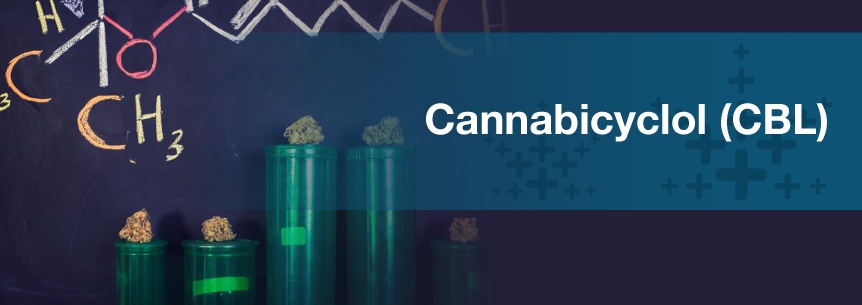
As a well-known herb with a plethora of purposes and uses for its many compounds, marijuana is becoming increasingly prominent in the medical world. Used to relieve pain, treat diseases and ease the effects of debilitating or damaging conditions, cannabis comes in many forms, including THC — which can treat pain, aid sleep and ease suffering — and CBD — which can treat a variety of conditions from psychoses and motor disorders like Parkinson’s Disease to serious conditions like cancer and lupus. Both types of marijuana are known as cannabinoids, or the compounds in the cannabis plant that provide health benefits. But these well-known compounds aren’t the only cannabinoids — you can find at least 66 of them in marijuana, and one of the least-studied components with possible potential is called cannabicyclol (CBL).
Much-studied marijuana contains 480 natural components and more than 100 active compounds, including the most well-known components, THC and CBD. Cannabinoids can be found in the leaves, stalk, seeds, flowers and resin of the marijuana plant, and different breeding, extraction and synthesis techniques can affect the potency, properties and effects of the compounds cultivated and refined for use. While THC and CBD have been extensively studied, experimented with and refined for specific doses and medical uses, the cannabinoid CBL is a different story.
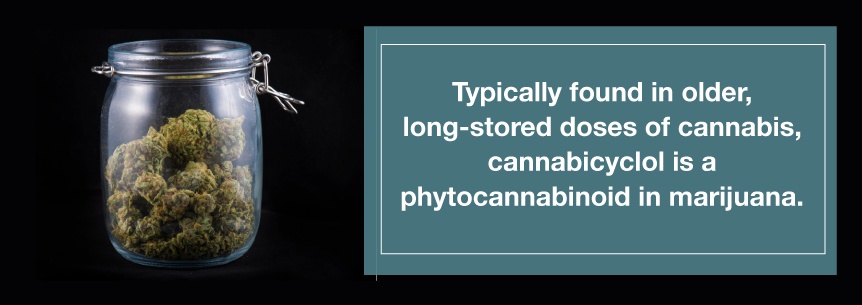
Typically found in older, long-stored doses of cannabis, cannabicyclol is a phytocannabinoid in marijuana. Unlike its fellow compounds, however, its discovery is relatively recent, and scientists haven’t had much opportunity to study it in the small doses in which it’s found. As a result, we know little about the properties, physical effects and medical potential of cannabicyclol.
Similar to opiates in physical effects, cannabinoids interact with the human body by affecting receptors in specific locations within the central nervous system. The two cannabinoid receptors we have currently discovered are referred to as CB1 and CB2, and they react with the cannabinoids with the assistance of specific, naturally-occuring substances that bind to the receptors, making up the endogenous cannabinoid system — which medical professionals are still researching and learning about.
The physical effects of cannabinoids depend on the areas of the brain and the receptors the compounds interact with when they enter the body. Every cannabinoid found in marijuana has different properties and different effects on the human body, although they all tend to affect pain perception and interact with both the limbic system — which affects cognition, memory and psychomotor actions — and the mesolimbic pathway — which is related to rewarding feelings and reactions.
Cannabinoids can trigger receptors producing natural substances like serotonin, anandamide, adenosine and vanilloid, which are responsible for regulating behavioral and functional aspects like your sleep cycle, pain receptors, mood and pleasure sensors. As a result, cannabinoids can have an overwhelmingly positive range of physical effects, especially on medical patients suffering from various degrees of pain or debilitations.
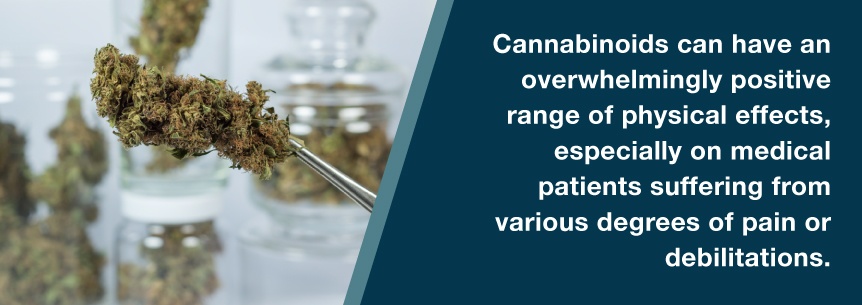
Types of cannabinoids differ in their properties and their effects, and the most important difference is the extent of their physiological activity. While some cannabinoids have a strong psychoactive effect in varying degrees of potency— like THC, CBN and CBHL — others like CBC, CBD and CBG are of a different class and do not produce such effects but have other physical properties like the ability to lower anxiety. Because it occurs in such small doses and has been difficult to study, scientists are currently unaware of the scope of cannabicyclol’s properties or how it affects the human body by interacting with receptors, but we hope to discover more about its potential in the future.
Cannabicyclol is usually shortened to the acronym CBL. Some folks also call it cannabipinol and shorten the name to CBP. Regardless of its name, little research has been conducted on it so far. Most existing studies examine the CBL molecule’s biosynthesis and structure — scientists first discovered the compound in 1964.
Cannabicyclol is created through the degradation of another marijuana compound — CBC. When the cannabinoid cannabichromene (CBC) decays from light exposure, it turns into CBL. While both CBC and CBL occur in much smaller amounts than cannabinoids like THC or CBD, a plant usually has more CBC than CBL.
As cannabis ages, it begins to have less THC and CBD and more CBC and CBL. A multidisciplinary research team from China found cannabis from the BCE era that had CBC and CBL as its two most prominent cannabinoids. So, even after sitting out for thousands of years, marijuana is still effective. However, even when it does occur, CBL appears in very small amounts, and even those limited stores are resistant to the process of decarboxylation — or extracting the active component of the compound, meaning active CBL is even more difficult to obtain and study.
Cannabicyclol has the molecular formula C21H30O2. Many other cannabinoids — like CBD and THC, the two most studied cannabinoids — have similar formulas. What makes CBL unique is the arrangement of its atoms and the fact that it has no double bonds. The double bonds in the psychoactive cannabinoid THC give the compound its cerebral effects. Since CBL doesn’t have double bonds, it can’t cause psychoactive effects.
You will find CBL in cannabis in much, much smaller amounts than you will other cannabinoids. Since it appears in such small quantities, scientists have had a tough time studying it properly.
The insignificant amounts that CBL appear in cannabis in have severely limited researchers’ ability to study it, so we don’t know too much about its medical benefits. When it was investigated alongside other cannabinoids for its potential to reduce prostaglandin production, it had little to no impact. Prostaglandins control muscle contractions, so it doesn’t seem to have the ability to help with that symptom. While recent studies show the possibility of positive effects in using CBL to treat inflammation and possible tumors, information is still limited, and results are inconclusive at the time. We do know, however, that cannabicyclol is non-psychomimetic, meaning it cannot deliver the type of high other cannabinoids are known to produce in medical subjects.
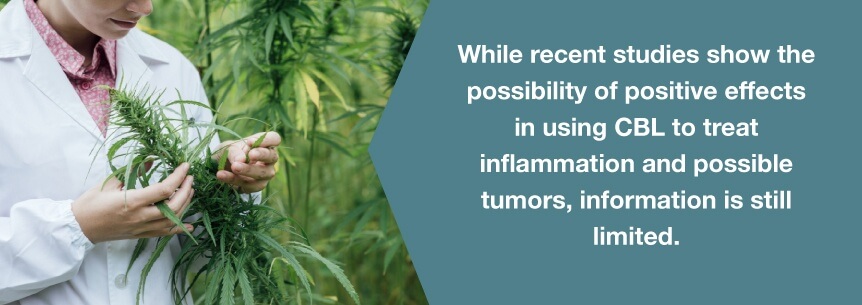
Due to the lack of scientific literature on CBL, we don’t really know what health issues it could relieve. So far, results indicate it has little effect, but its possibilities have yet to be extensively explored. We also know that CBL doesn’t cause any harmful effects, and we’re optimistic that future studies on its makeup, refinement and dosages will reveal its potential positive properties as well as the results of its interactions with other cannabinoids. Keep up with our blog updates to learn about any breakthroughs related to CBL as soon as they happen.
While political and legal debates over the use of medical and recreational marijuana may seem like relatively new issues, we have used cannabis for medicinal purposes for thousands of years. Introduced into the Western world in 1839 by W.B. O’Shaughnessy, a surgeon working in India, it rose to prominence due to its reported effects as a sedative and analgesic with antispasmodic, anti-inflammatory and anticonvulsant properties.
While the properties of cannabis were interpreted and classified differently and an evolved understanding of the substance emerged over time, many aspects of marijuana have yet to be discovered. We do know it possesses a variety of beneficial medical qualities and pharmacologic effects in both the immune system and central nervous system as well as various areas of the brain. Cannabis is not currently legalized in the United States as a whole, but specific states are expanding their policies for medical marijuana allowances. In time, we expect cannabis awareness and legalization to expand in reaction to the cancer-fighting benefits of marijuana.
While we don’t yet know the effects of CBL, we can infer its possible properties based on what we know about other cannabinoids like TCH and CBD. Because CBL is non-psychomimetic, it’s possible that it bears more similarities to CBD — a known and studied antipsychotic — than TCH, but this is only conjecture at the moment. Depending on its properties and its effects on human receptors, there is a possibility that CBL may be discovered to share some or many of the uses of other marijuana compounds.
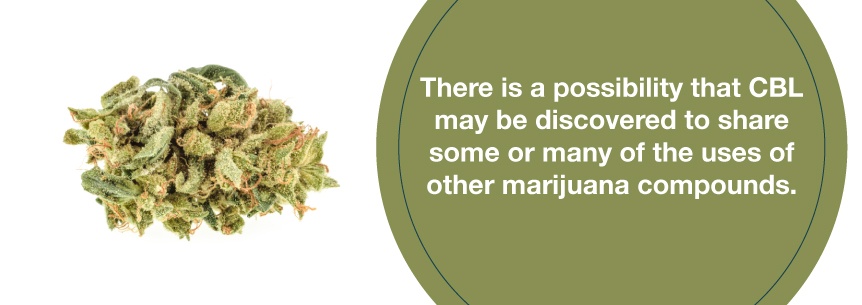
While they may be proven or disproven in the future with further research, here are the possible potential abilities of CBL as a cannabinoid, based on the effects of other marijuana compounds:
As you can see, cannabis has many compounds you can learn about to understand the way it affects your body and the potential benefits it can hold for treating medical conditions. Although the details, properties and possible uses of cannabicyclol have yet to be comprehensively researched and further investigated for medical use, it will hopefully become a beneficial part of future cannabis education and medical marijuana efforts. For more information about cannabinoids, we can lend a hand. Our comprehensive cannabinoid guide has a general overview and deep dives into each compound.
If you’re interested in using medical marijuana, search our site for a cannabis-certified doctor or dispensary near you.